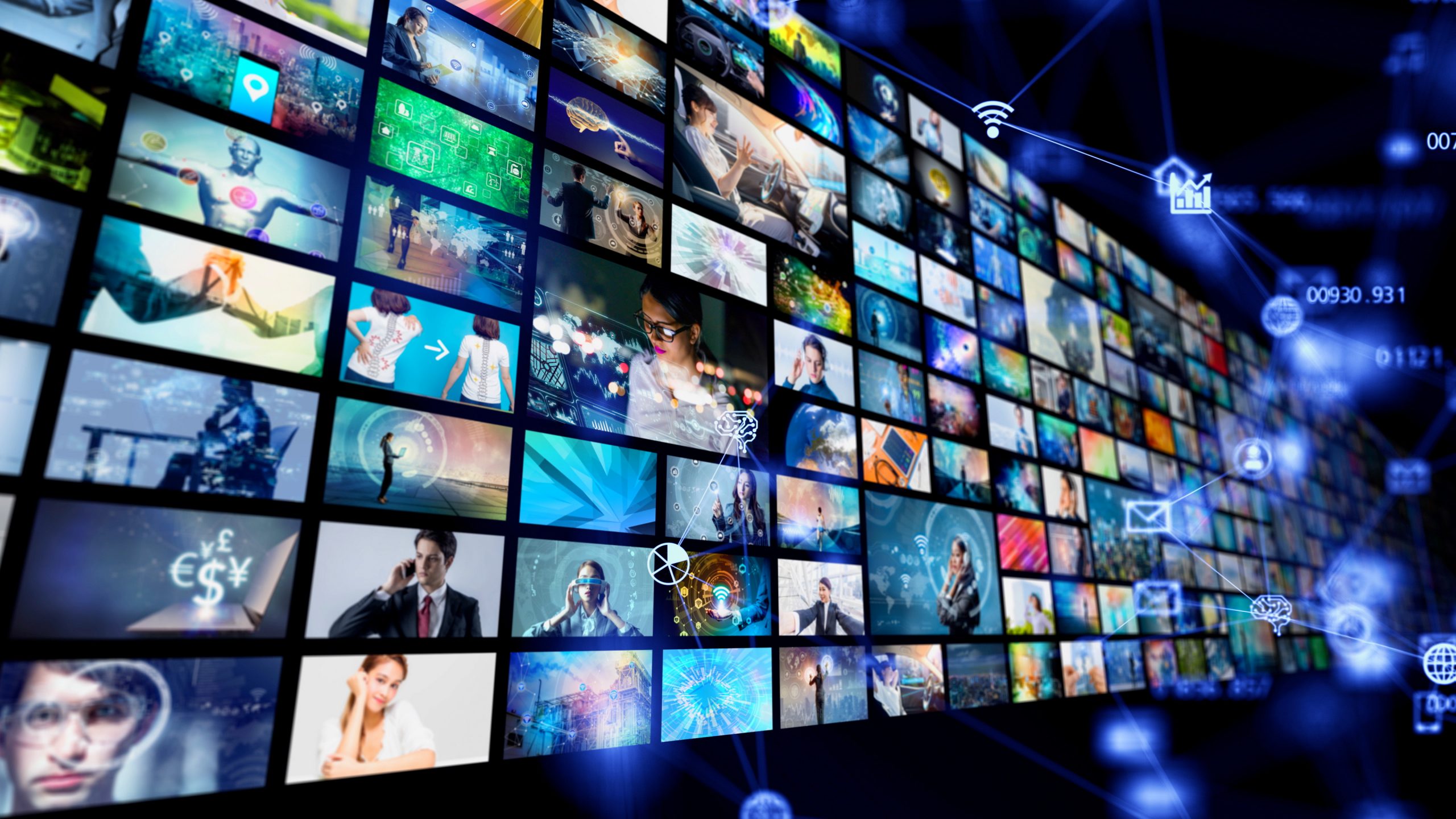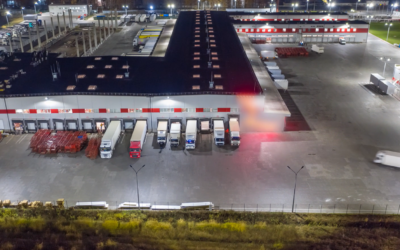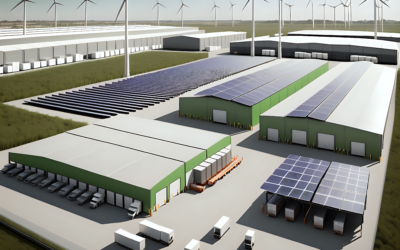If you wonder whether Artificial Intelligence will become part of your life, the answer is simple: yes, it will. Are you wondering when it will happen? The answer is still very simple: it has already happened.
AI is everywhere, including where you’d never imagined it could be. This article will trace the origins of the concept of artificial intelligence, discuss what fostered its popularity, and present some examples of its most widespread uses. Finally, it will focus on the increasing use of AI in one sector in particular: the film industry.
The origins of artificial intelligence
A common definition of AI is “the ability of a machine to perform cognitive functions we associate with human minds, such as perceiving, reasoning, learning, interacting with the environment, problem-solving, and even exercising creativity.”
Even though artificial intelligence has grown in popularity in the past two or three decades, the concept itself was introduced in the middle of the last century. The term was first used in 1955 on a proposal written by professors John McCarthy (Dartmouth College), Marvin Minsky (Harvard University), Nathaniel Rochester (IBM), and Claude Shannon (Bell Telephone Laboratories). The purpose of this document was to organize a conference that would gather about twenty pioneering researchers and discuss “ways to make a machine that could reason like a human capable of abstract thought, problem-solving and self-improvement. ”The Dartmouth Summer Research Project on Artificial Intelligence, which took place one year later, is commonly considered the official birthdate of the new field.
Professor John McCarthy had been inspired by Alan Turing’s paper “Computing Machinery and Intelligence”, published in 1950, in which he suggested considering the question “Can machines think?”. To help distinguish a computer from a human, the British mathematician introduced the famous “imitation game,” which vaguely inspired the title (not the plot) of the biopic on the scientist that was released in 2014. The idea of what would later be called the “Turing test” is to have a human, a computer, and a (human) interrogator are in three different rooms. The interrogator must distinguish the human from the computer by asking them a series of questions and reading their typewritten responses. If the interrogator cannot reliably tell the machine from the human, the machine is said to have passed the test.
What encouraged today’s rise of artificial intelligence?
Simply put, artificial intelligence is a collection of technologies that combines data, algorithms, and computing power. If AI has only recently become so popular, it is due to several important technological advances, including:
1. Increased computing power and storage capabilities
It was only 1965 when Intel’s co-founder Gordon Moore predicted that the number of transistors in an integrated circuit would double every two years, setting the foundations of what would later be known as Moore’s Law.
According to Expert Exchange, we have seen one trillionfold increase in computing power between 1956 and 2015[1], with a consequent decrease in the cost of technologies. This trend is still confirmed to this day, and it’s a key driver of the current upsurge of AI, together with the affordability of cloud computing and the increasing availability of data.
2. The explosion of Big data
Did you know that in 2020 YouTube creators upload 500 hours of video every minute, every day?[2] And, even more impressive, that this data is 10 times higher than in 2010? The amount of data in the world at the dawn of 2020 was estimated to be 44 zettabytes (which corresponds to 44 trillion gigabytes). Data is the fuel for artificial intelligence applications because that’s what deep learning (the machine learning process at the heart of AI) needs to process to produce accurate results. The more the data processed, the better the result will be. Deep learning consists of artificial neural networks that are modelled on similar networks present in the human brain. Each layer of “neurons” processes an aspect of the data and produces the final output. For example, once the networks learn what an object looks like, they can recognize the object in a new image.
AI’s main applications: a few examples
AI has already infiltrated many aspects of our personal and work lives. Ever noticed how the next words are suggested to you when you type your chat message? AI.
Are you enjoying using Google Maps to find the best route to avoid traffic? AI again.
Ever been bothered by spam in your inbox? That’s still AI trying its best to filter out unwanted messages.
Artificial intelligence is present in businesses like transportation, health care, urban planning, manufacturing, and many others. It provides its services whenever a complex set of data must be analysed and used to make predictions. A set of data that would be too large or complex for human beings to process in any meaningful time.
We are probably still a long way from the Super intelligent AI that simulates human behaviour in Sci-Fi movies (and why should it do that even if it could?), but specialized AI has been assisting professionals for many years with accurate predictions.
Recently, Google has made available in some countries around the world it is a Duplex virtual assistant, capable of autonomously booking a restaurant by calling and sustaining a simple discussion with the receptionist on the other side of the line.
The revolution is underway, and it cannot be stopped: only embraced.
Of course, we could argue that some skills will always be the exclusive realm of humans, but the truth is that, with the rise of computing power and the increasing availability of data, we should get ready to see artificial intelligence eventually become able to perform better than human beings, and this, even in very specialised domains like medicine or engineering.
What we already experience today is how online businesses make full use of the potential of artificial intelligence, leveraging consumers’ behaviour and using data to suggest personalised recommendations that reach all of us every day.
One of the leaders in this field is Netflix, which claims that its recommendation algorithm alone is worth $1 billion a year. True or not, the streaming platform knows the content you like before you know yourself and uses this information not only to suggest what you should watch but also to decide which projects to fund. How do they do that? By tracking not only the movies that you are watching but also the summaries you are reading and how much time you spend surfing titles and watching the trailers.
Netflix’s successful experience has a lot to do with probably what pushed another industry to explore the potential of artificial intelligence: the movie industry.
AI in the movie industry
Can an industry in which creativity, charisma, and the artistic component play such an important role use artificial intelligence? Not only it can, but the applications are numerous:
- Help to evaluate and write new scripts by leveraging patterns of content that leads a movie to be a hit
- Help to select and matching actors and other talents to match the script and the target audience preferences
- Help to predict the results at the Box Office and the critics’ score
- Help to promote the movie by reaching the target audience both demographically and geographically, with the right content
Since Netflix disrupted the film industry many years ago by using data, algorithms, and AI to produce recommendations, many others started to follow the same path.
Amazon and other major studios are now realizing that they need to jump on the train if they want to keep being relevant in this field. When experience and gut feeling allow for a 45% accuracy in predicting the outcome of a new movie, AI-based tools have been showing accuracies of 85%. It’s data vs. opinions, and it appears data is prevailing.
Not surprisingly then, Warner Bros has signed a deal with Cinelytic to test their platform, which predicts success, likelihood, and profitability of a new film by applying AI to a dataset of 100 000 movies (catalogued with data related to information about the content but also the production and distribution) and 550 000 talents (artists, directors, writers, producers, etc.).
Likewise, 20th Century Fox partnered with Google to develop a specialized AI, called Merlin, that analyses video frames from movie trailers in order to match their content to a specific audience by comparing with a large set of existing data.
Although the pandemic has had a very negative impact on the global film industry, it also has naturally made financiers more cautious about investing. This is even more accurate when it comes to independent producers, according to Alexandra Lebret, managing director of the European Producers Club. The association of Europe’s most influential independent film producers recently signed a partnership with Swiss-based AI-assisted platform Largo.ai, allowing film production companies to trial its technology for six months.
Largo.ai is a Swiss start-up that has developed a comprehensive platform to provide insights to film producers to assist in making the right decisions, minimize the risk and maximize the chances of success.
Based on a dataset of 400 000 movies, 1 800 000 talents, and 59 000 scripts, Largo.ai’s AI analyses scripts to spot patterns that may appeal to a specific demographic, elements of micro-genres, etc. It evaluates the choice of actors and talents and ultimately expresses a financial prediction of success at the Box Office.
As pointed out by Alexandra Lebret, a platform like Largo.ai gives independent producers similar tools to those used by bigger studios and streaming platforms, helping them to “negotiate more effectively and avoid losing their rights and revenues.”
These are just a few examples, but they seem to confirm that regardless of the sector in which a company operates, the question is not “should we use artificial intelligence” but “how can we use it.” Important strategic decisions, like capital budgeting, can be made based on predictions derived from a huge amount of collected user data. This is where artificial intelligence can be game-changing and be a real competitive advantage for a company.
Conclusion
So, is AI going to be the next Scorsese? Certainly not yet, as shown by the movie experiment “Zone Out,” a five-minute film was written, performed, scored, directed, and edited entirely by an AI program. There is still space for the human in many industries and in the artistic domain in particular.
It is often claimed that applying AI in artistic content creation will lead to uniformization of such content, as the machine will always try to plagiarize the most successful and disregard the hidden pearls in the unsuccessful one.
But it is also very possible that instead, AI will revert such a trend by finding hidden patterns in the data that would have been invisible to a human eye.
Of course, one limitation of AI is that it is trained on a dataset that is a representation of the past (which existing movie has been successful, which actor has been the most popular, …). Therefore, it has an intrinsic barrier in predicting changes in tastes and social behaviour if those have not already a seed in that past. Could artificial intelligence have predicted that because of COVID, cinemas would be closed for months? Unfortunately not.
This limit will possibly be pushed forward by the constant increase in the size of the available dataset and the processing power eventually moving towards the general AI capable of interpreting non-specialized data.
For now, Artificial Intelligence can be seen as a powerful tool that can support human beings and allow a form of democratization by providing the same set of knowledge to small and large businesses. A tool that can increase the speed of decision-making, a tool that relies more on data than opinions.
[1] https://www.visualcapitalist.com/visualizing-trillion-fold-increase-computing-power/
[2] https://www.domo.com/learn/infographic/data-never-sleeps-8






